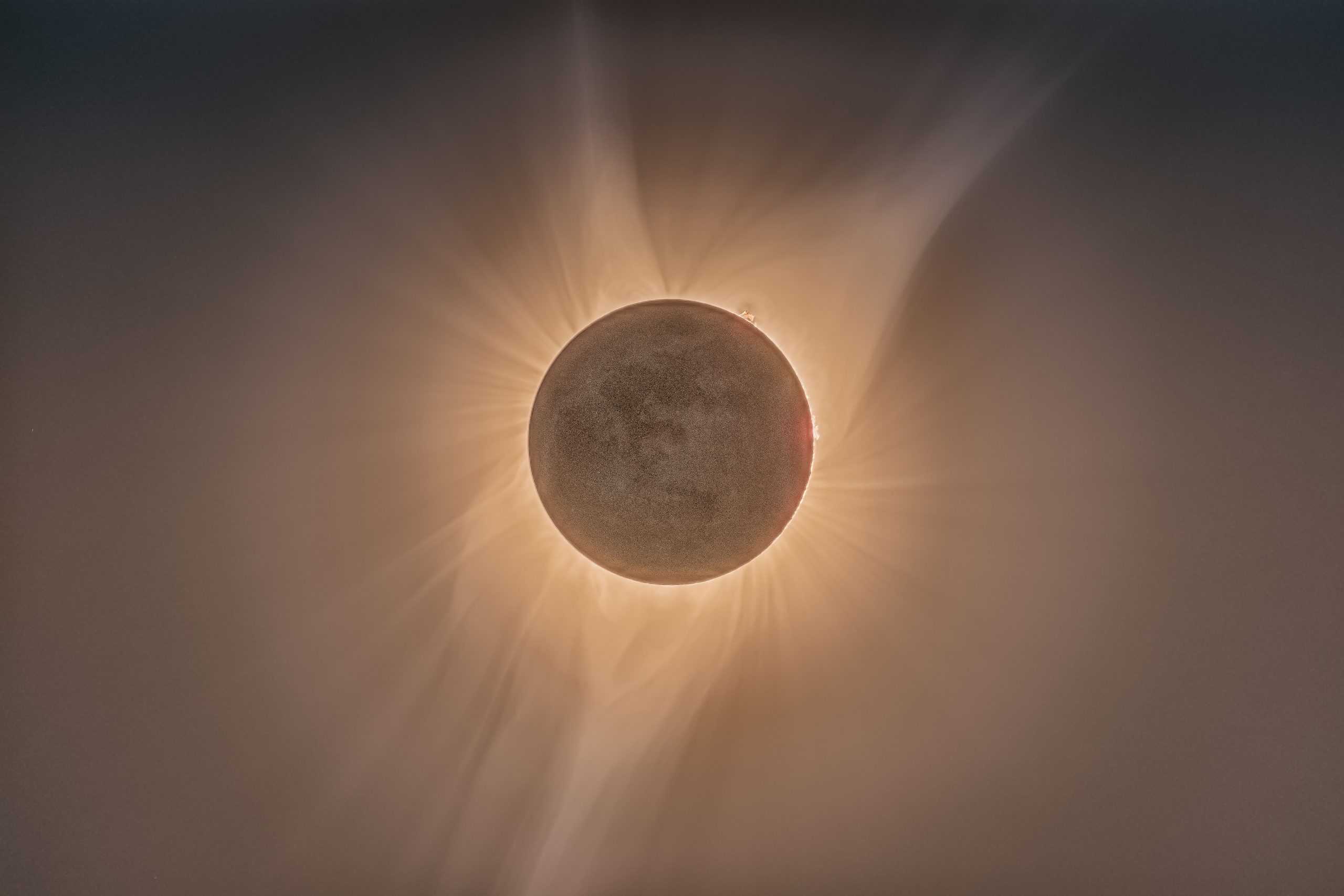The Long Day of Joshua – Part 2

My essay on the long day of Joshua has generated a good amount of response from readers. It seems that many people are interested in understanding what happened at the battle of Gibeon.
If you are reading this essay before you have read the first essay, “The Long Day of Joshua – Part 1,” I suggest that you read that essay first before you read what follows.
In this essay I will address three issues: the view that what happened was a solar eclipse, how to translate the Hebrew words, and the issue of how to understand meteorological phenomena in the Scriptures by looking at three different texts. In my next post, I will address the biblical text in question, Joshua 10:12-13, and give my views of what happened during the hailstorm.
The Eclipse of the Sun
The most popular way of explaining the long day of Joshua is to say that what happened was a solar eclipse which allowed Joshua and the army of Israel to conquer the Amorites during the period of darkness. There are four types of solar eclipses.
Total eclipse. A total eclipse occurs when the whole of the disk of the sun is obscured by the moon. In a total eclipse, there is total darkness and only the solar corona is visible.
Annular eclipse. An annular eclipse occurs when the sun is not completely covered by the moon. In annular eclipses the sun appears as a very bright ring.
Hybrid eclipse. A hybrid eclipse occurs when at certain points on the surface of Earth the eclipse is total while at other points it appears as annular. Hybrid eclipses are very rare.
Partial eclipse. A partial eclipse occurs when the moon does not completely cover the sun. In partial eclipses light is visible and there is no total darkness.
A team of Israeli scientists, using NASA data, has concluded that the events narrated in Joshua 10:12-13 refer to a solar eclipse, during which the moon passed in between the sun and the earth, blocking the sunlight. According to the researchers, the eclipse occurred October 30, 1207 BCE at 4:28 p.m.
A team of Cambridge University researchers, in a paper published in the Royal Astronomical Society Journal Astronomy & Geophysics, in their studies of eclipses in antiquity, also concluded that the long day of Joshua was a solar eclipse that occurred on October 30, 1207 BCE.
Although the view that the long day of Joshua was caused by a solar eclipse is attractive and does not necessitate a literal interpretation of the text, which requires a reversal of all the laws of physics, the solar eclipse view is not supported by the text in Joshua.
First, solar eclipses happen during the day. Joshua attacked the Amorites while it was still dark. The solar eclipse provided additional darkness, but according to the Israeli scientists, the eclipse occurred at 4:28 p.m. According to the Cambridge researchers, the eclipse was an annular eclipse. The eclipse began at 3:27 p.m. Annularity occurred at 4:28 p.m. The eclipse ended at 5:38 p.m (See graphic of the path of the solar eclipse above).
Second, if Joshua needed the darkness to fight the Amorites, the partial darkness caused by the eclipse lasted only 131 minutes. As I will explain in Part 3 of this study, Joshua was trying to fight the Amorites in the dark of the night, not during the day.
The Hebrew Words
One issue that has caused some amount of confusion is how to translate the Hebrew words into English. There are two Hebrew words in the biblical text that have been translated differently by English versions. This issue is how the two words, עמד and דום, are translated in modern Hebrew and biblical Hebrew can simply be addressed by emphasizing that the meaning of words changes with time. Take for instance, the translation of the King James in English.
The King James Version used the word “corn” to translate Hebrew words that literally mean “grain.” In 1611, when the King James Bible was published, “corn” meant grain in general. Today the word “corn” in English refers mostly to “maize,” a type of grain that was domesticated in Mesoamerica. I could produce many other examples to demonstrate how words change with time, but this alone will suffice.
I do not know modern Hebrew, but in modern Hebrew, the words עמד and דום could be translated as “at attention,” “stand still,” and they could also be translated “stand in silence,” or “stand quiet.” These two words in Hebrew עמד and דום that appear in the text of Joshua will be addressed in detail in my next post.
Meteorological Phenomena
Another issue that must be addressed is how to understand meteorological phenomena in the Bible. Many people take these events literally in order to defend the authenticity of the biblical text. However, in many cases, a literal interpretation of meteorological phenomena in the Bible would create many new problems that would again violate the laws of physics.
If the sun literally stood till, major problems would be created if the earth would stop rotating on its axis or if the sun and the moon would stand still in the sky. The consequences of these events would be beyond comprehension. It is true that the God who created the laws of the universe could have created other laws or suspend the present laws of the universe in order to sustain the miracle of the sun standing still, but this is not how God works. God could have easily defeated the five Amorite kings (and he did) without changing the laws of physics.
One example of a meteorological phenomenon that cannot be understood literally is Judges 5:20:
“From heaven the stars fought, from their courses they fought against Sisera” (ESV).
This passage is the poetical description of the battle narrated in Judges 4. If this event is taken literally, it would mean that the stars fought as soldiers in the army of Israel. Or as the text was interpreted by one writer: “The angels of God came to the assistance of Israel.” But what happened?
The text of Judges 5:20 simply says that God fought on the side of Israel as does the text of Joshua 10:14: “For the LORD fought for Israel.” Judges 4 says that God gave Israel a great victory by using a storm that produced a great downfall of rain that caused the river Kishon to overflow and, as a result, the nine hundred chariots of iron in the army of the Canaanites got stuck in the mud causing Sisera to flee on foot to the tent of Jael. The miracle here was the storm that helped defeat the enemy: “From heaven the stars fought, from their courses they fought against Sisera.”
Another phenomenon that cannot be taken literally is found in Joel 2:30-31 (H 3:3-4):
“And I will show wonders in the heavens and on the earth, blood and fire and columns of smoke. The sun shall be turned to darkness, and the moon to blood, before the great and awesome day of the LORD comes” (ESV).
These words of the prophet Joel have been interpreted in different ways by scholars over the years. This cosmic manifestation, the darkening of the sun, has been associated with a solar eclipse and whatever atmospheric abnormality caused the moon to turn to blood has been explained as the fire that consumed the earth, and so on.
And yet, on the day of Pentecost, when the Holy Spirit came upon the believers, Peter told the crowd: that what was prophesied by the prophet Joel was being fulfilled before their eyes: “But this is what was uttered through the prophet Joel: ‘… and I will show wonders in the heavens above and signs on the earth below, blood, and fire, and vapor of smoke; the sun shall be turned to darkness and the moon to blood, before the day of the Lord comes, the great and magnificent day’” (Acts 2:16-20).
But there was no eclipse, no fire on earth, and no blood on the moon and with the exception of “a sound like a mighty rushing wind” and “divided tongues as of fire,” there were no other events to fulfill literally Joel’s prophecy. This has caused one interpreter to say that the meteorological events prophesied by Joel have been postponed to the last days, to the Day of the Lord.
The third event to be discussed is the one described in the New Testament in Revelation 12:3-4:
“And another sign appeared in heaven: behold, a great red dragon, with seven heads and ten horns, and on his heads seven diadems. His tail swept down a third of the stars of heaven and cast them to the earth” (ESV).
No one takes literally that a third of the stars of heaven could fall on earth. The way most commentators understand these words is by allegorizing them. The stars of heaven represent leaders of government or leaders of the church who were taken down by the dragon, who represents some kind of tyrant or imperial ruler.
The argument above is to demonstrate that when it comes to meteorological events in Scriptures, most interpreters do not interpret these events literally, except for the event in Joshua 10:12-13. Some people believe that if one does not believe that God could perform such a miracle, one then does not believe in God. Take, for instance, this defense for the miracle:
What is one to make of the event? Primarily this: it was a miracle. Joshua prayed for divine assistance, and he received it. An omnipotent God could have helped in any way He chose. Before anyone can dismiss the Bible because it reports miracles as though they really happened, he must do two things.
First, he must prove that there is no God who has the ability to accomplish such tasks. Now, if there is a God Who is capable of speaking the entire Universe into existence (Psalm 33:9), then it must be admitted that He has the power to do with it whatever He wishes. Who is measly man to say that the God of the Universe does not have the power to stop the Earth, Moon, and Sun, and still maintain every other semblance of order? By definition, God is beyond the scope of such criticism (The link to this article has been [fortunately] deleted by the publishers).
I commend those who desire to defend the integrity of the Bible, but the integrity of the Bible can be defended without postulating that the sun (and indeed the entire solar system) was suspended miraculously for a day.
I will continue this discussion in my next post. In my next post I will deal with the “hailstorm” and with the two Hebrew words עמד and דום. I will also explain why the long day of Joshua has been called “the missing day in the universe.”
Claude F. Mariottini
Emeritus Professor of Old Testament
Northern Baptist Seminary
NOTE: My book Divine Violence and the Character of God deals with God’s violent acts in the Old Testament in light of God’s character as a gracious and merciful God. You can order a copy of the book at a 40% discount. If you want to order the book at 40% discount, send an email to drmariottini@gmail.com and put Divine Violence in the subject line and I will send you a promo code for the 40% discount. The 40% discount offer ends on February 28, 2022.
NOTE: Did you like this post? Do you think other people would like to read this post? Be sure to share this post on Facebook and share a link on Twitter or Tumblr so that others may enjoy reading it too!
I would love to hear from you! Let me know what you thought of this post by leaving a comment below. Be sure to like my page on Facebook, follow me on Twitter, follow me on Tumblr, Facebook, and subscribe to my blog to receive each post by email.
If you are looking for other series of studies on the Old Testament, visit the Archive section and you will find many studies that deal with a variety of topics.






